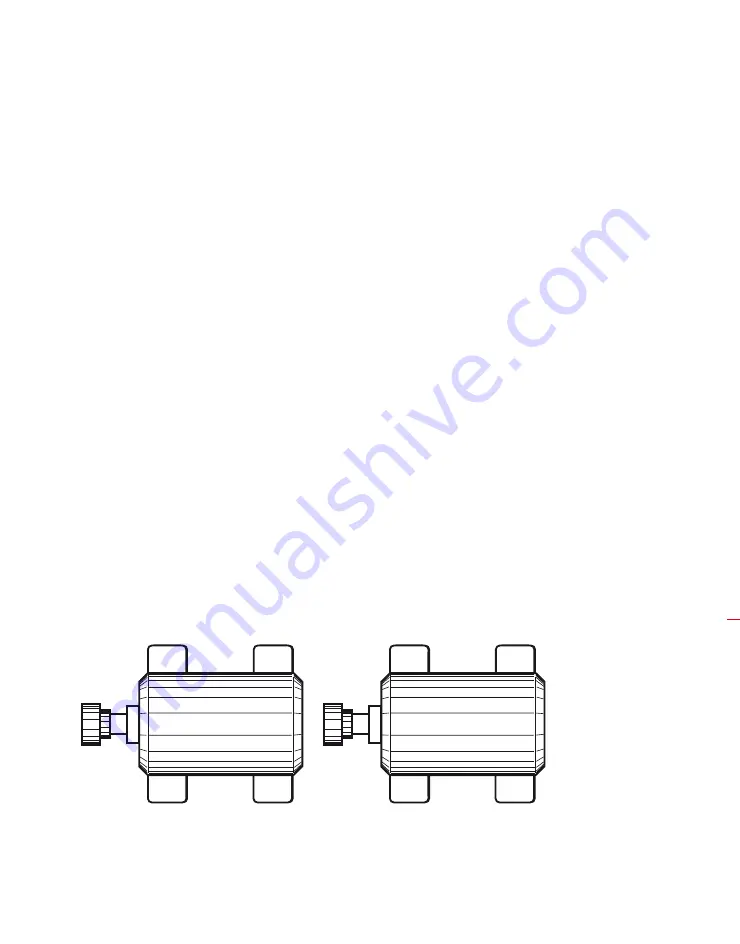
Soft foot
107
5 .17 .1 Parallel soft foot correction
If two diagonal values are roughly equal and significantly higher than the other two,
parallel soft foot can be assumed as a first solution.
5 .17 .2 Angular soft foot correction
If one value is significantly higher than the others, then angular soft foot can be
suspected.
The ‘problem foot’ or machine frame is probably bent or distorted in some way. In
this case loosen the bolt and examine the foot more closely. Use a feeler gauge to
establish the variation of the gap and use these measurements to sketch the shape
and dimensions for a ‘stair stepped shim wedge’.
If the soft foot is purely ‘angular’ then the stepped shim will vary in thickness from
about zero to twice the value displayed by the computer.
Parallel soft foot
The machine is rocking on
two diagonal feet which
are longer than the other
two. In this example, the
correction would be to
place a 0.89mm shim under
foot ‘b‘ (the foot with the
largest gap)
Angular soft foot
The base of one or more
feet is at an angle to the
foundation and is only
partly in contact.
0 .10
0 .74
b
0 .18
0 .13
0 .18
0 .76
0 .10
a
0 .89
c
d
a
b
d
c
Summary of Contents for OPTALIGN smart RS5 BT
Page 10: ...OPTALIGN smart RS5 BT handbook 10 Page intentionally left blank ...
Page 16: ...OPTALIGN smart RS5 BT handbook 16 This page intentionally left blank ...
Page 28: ...OPTALIGN smart RS5 BT handbook 28 Page intentionally left blank ...
Page 38: ...OPTALIGN smart RS5 BT handbook 38 This page intentionally left blank ...
Page 112: ...OPTALIGN smart RS5 BT handbook 112 This page intentionally left blank ...
Page 174: ...OPTALIGN smart RS5 BT handbook 174 This page intentionally left blank ...
Page 194: ...OPTALIGN smart RS5 BT handbook 194 This page intentionally left blank ...






























